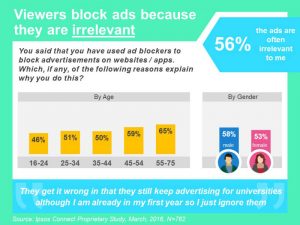Getting a user to install and launch your mobile app is only half of the battle. Contributor Kristin Cronin explains how you can keep people happy and engaged.

It’s times like these where I ask myself: How did we get here?
With all of the technological advancements in our back pockets, how did we arrive at a place where we’re actually losing the very people who are glued to their phones?
As mobile marketers, the power to change course is in our hands. How? By shifting the focus from acquisition to retention.
If you’ve been in the industry long enough, you surely remember the days when acquisition was deemed the most coveted mobile metric. At that time, getting more people to launch your app and growing your user base was king. Then we started noticing that 25 percent of users were only using an app once, a clear signal that we must move beyond just measuring app installs and focus on learning more about the kinds of in-app behaviors that promote engagement and retention.
What have we learned?
You may be wondering what we have learned and what makes for a good retention rate. First, let’s take a look at where retention rates stand today. Through our company’s own research, we found that, across all industries, the average mobile app retention rate is 22 percent after 90 days. You read that correctly — across all industries, 78 percent of all app users churn within 90 days.
So, how can you keep your app users from churning? Here are nine ways mobile marketers can improve their app retention rates:
- Get better at onboarding: If your users don’t clearly understand the value of your app and how to use it — right at the start — their odds of churning drastically increase. So, what does good app onboarding look like? It emphasizes the app’s value proposition, highlights core features and only asks users about information it needs with clear calls to action.
- Provide useful in-app messages: In-app messages are received while a user is within your app, and it’s usually a result of some action taken. Because of this, they’re highly relevant and also make it easier for people to move through the app experience. Plus, they’ve been known to increase retention by 3x. Useful in-app messages will tell a user new features, highlight what’s different and share important information, such as letting customers know of surge pricing within the Uber app.
- Reach users outside the app with push: Push notifications are crucial for engaging with people when they don’t have the app launched. Since they’re sent right to a user’s beloved home screen, the stakes are high to get it right. That means having compelling messaging that’s personalized to the user and marrying that with the latest in push notification technology, such a geolocation.
- Give the people what they want: App users want their interactions to be tailored to their preferences, location and in-app behavior. In fact, a recent study found that individualized push and in-app messages performed much better than broadcast.
- Have the ability to predict: Understanding which of your users are at risk of churning gives you a chance to save them. Mobile marketers should design highly personalized messaging campaigns to re-engage these people before it’s too late and they’ve closed an app for good.
- Re-engage with lapsed users: Half of all iOS users opt out of push messaging, which makes it really hard to draw them back in. The solution? Remarketing. Reaching these people with a compelling reminder outside your app — through email, social or search advertisements — is an effective way to re-engage them. When doing so, be sure to leverage insights into their behavior, interests and preferences to ensure you’re staying relevant.
- Don’t shy away from A/B testing: The way to truly know which marketing strategies — such as calls to action — are working and which are falling flat is through A/B testing. These insights make you smarter and more efficient when deploying campaigns and help you focus on the messaging and features that drive engagement and conversion.
- Create an omnichannel experience: A big mistake marketers make is not integrating their app into their overall marketing channels. All too often, apps are siloed from the rest of the marketing strategy, resulting in a disconnected brand experience for the user. Marketers should promote and infuse their apps across channels to create a seamless experience for users — which translates into having a very sticky app, therefore boosting retention rates.
- Let data be your guide: As with any channel, to truly win at mobile, you must lead with data. That means arming yourself with the insights needed to understand how well you’re retaining users and how impactful your app marketing campaigns are in moving the needle. Having the right data insights will allow you to strengthen your interactions with users, ultimately resulting in a positive uptick in retention.
The time is now for marketers to enact a retention mandate if they want to succeed in keeping people around. This means making retention a key performance indicator of a successful app, alongside acquisition and engagement.
Opinions expressed in this article are those of the guest author and not necessarily Marketing Land. Staff authors are listed here.
Marketing Land – Internet Marketing News, Strategies & Tips
(54)
Report Post








